LUNATICS
by Carlo Borloni
The Inner Theater of Excess
Every era has its monsters. Not the fairy tale kind, but the ones that live inside us. We dress them in rationality, disguise them as ambition, silence them with irony. But they remain. Lurking. Unheard.
With Lunatics, Gavin Meeler throws open the curtain on this inner theater. And he offers no comforting spectacle: no linear plot, no redeeming protagonist. Only apparitions. His figures don’t perform, they erupt. They don’t move through space but through the instability of feeling. Each one is a jolt, a detonation of the self. They don’t ask to be understood, they demand to be felt.
There is no catharsis in Meeler’s work, no illusion of redemption. The Lunatics don’t heal. They don’t evolve. They don’t make peace. They dwell in margins, in unresolved spaces, in the excess that lives inside us all. And perhaps for this very reason, they’ve never felt so familiar.
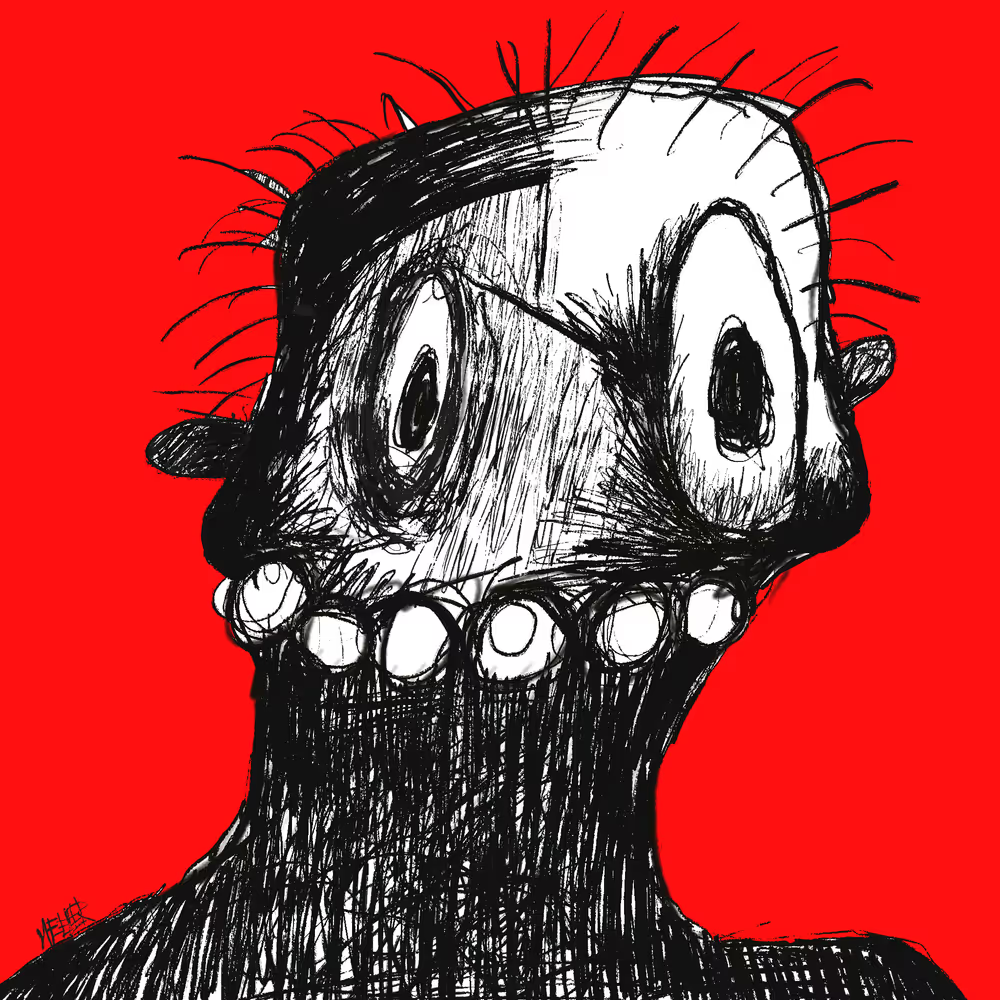
Lunatic #58, Gavin Meeler
The Body as Psyche, the Hand as Scream
The hands. Always the hands.
Huge, distorted, often grotesquely disproportionate to the bodies that hold them. In Meeler’s universe, hands are not anatomical elements, they are screams, memories, the physical incarnation of a primal anxiety. These hands reach, protect, lash out. But above all, they exist. They dominate. They declare.
In the expressionist tradition, the body has always been a battlefield. Meeler steps into this lineage, but with his own brutal, pop, despairing grammar. His figures seem pulled from a child’s nightmare or a deranged cartoon. Wild eyes, clenched teeth, grotesque poses on the verge of implosion. But nothing here is gratuitous. Every gesture is a symptom. Every grimace, a question.
And among all the parts of the body, the hands become a manifesto. As if to say: “Look. This is me. This is you.”
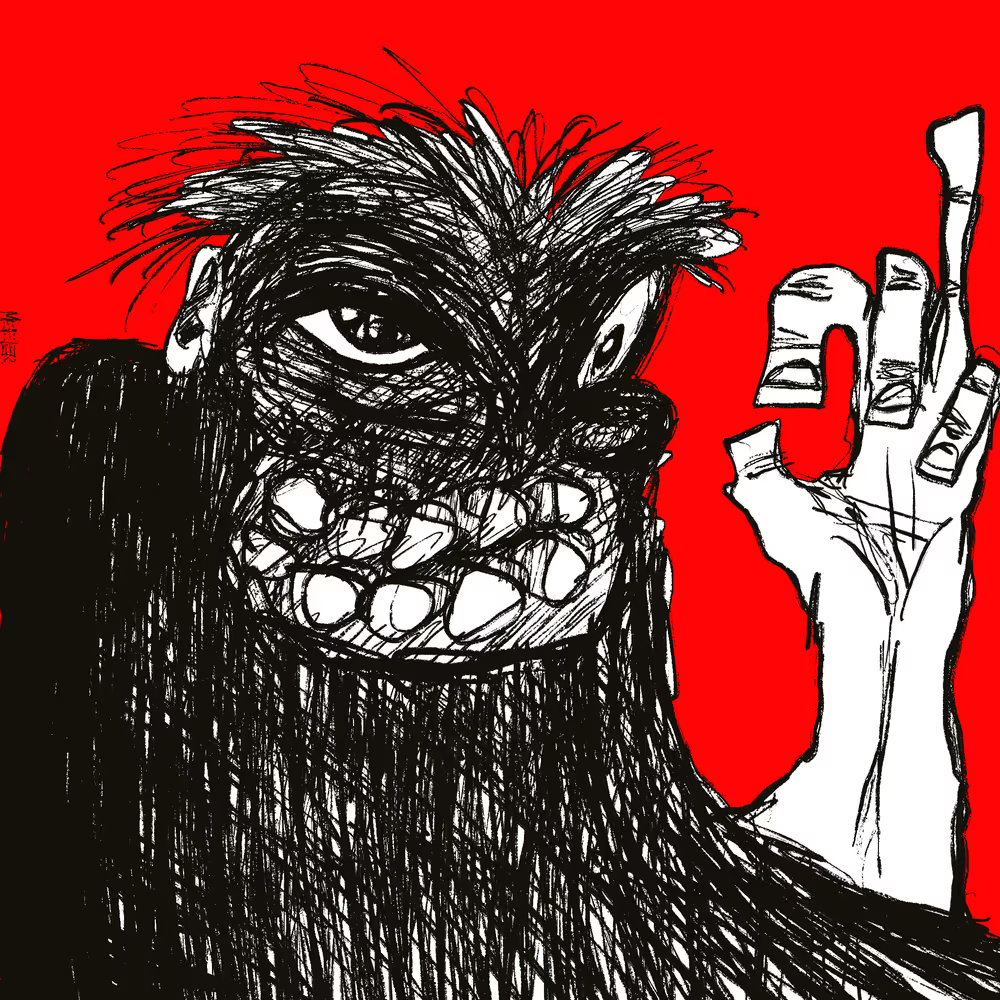
Lunatic #68, Gavin Meeler
The Mental Landscape of the South
Born and raised in rural Georgia, Meeler doesn’t turn his homeland into a theme, but it seeps through his aesthetic. In the alternation of greens and blues, in the irregular rhythm of his characters, we can feel the echo of a quiet, almost mystical landscape. Dense forests, starry nights, physical isolation as a sensorial matrix. A soft pulse behind the noise.
It’s a South far from clichés. There’s no nostalgia, no folklore. There is tension, between silence and scream, between stillness and madness. As if the more untouched the nature, the louder our inner turmoil echoes. The Lunatics are not urban creatures. They feel ritualistic, like ancient totems or spirits emerging from the treeline at dusk.
Irony and Tragedy: The Double Tongue of Delirium
To laugh and to cry. At the same time. That’s the tension running through all of Meeler’s work.
The power of Lunatics lies in its emotional ambiguity. Some figures make you laugh. Others unsettle you. Some do both. But all of them seem to ask the same uncomfortable question: Why are you reacting like this?
Meeler doesn’t guide us. He exposes us. He uses irony as a trap, a detonator. And just as we start to smile, we realize something is tightening around our throat. It’s the tragedy beneath the color. The madness behind the joke. The recognition of a side of ourselves we didn’t want to see.
That’s when the truth lands: the Lunatics aren’t insane. We are. They’ve simply stopped pretending.
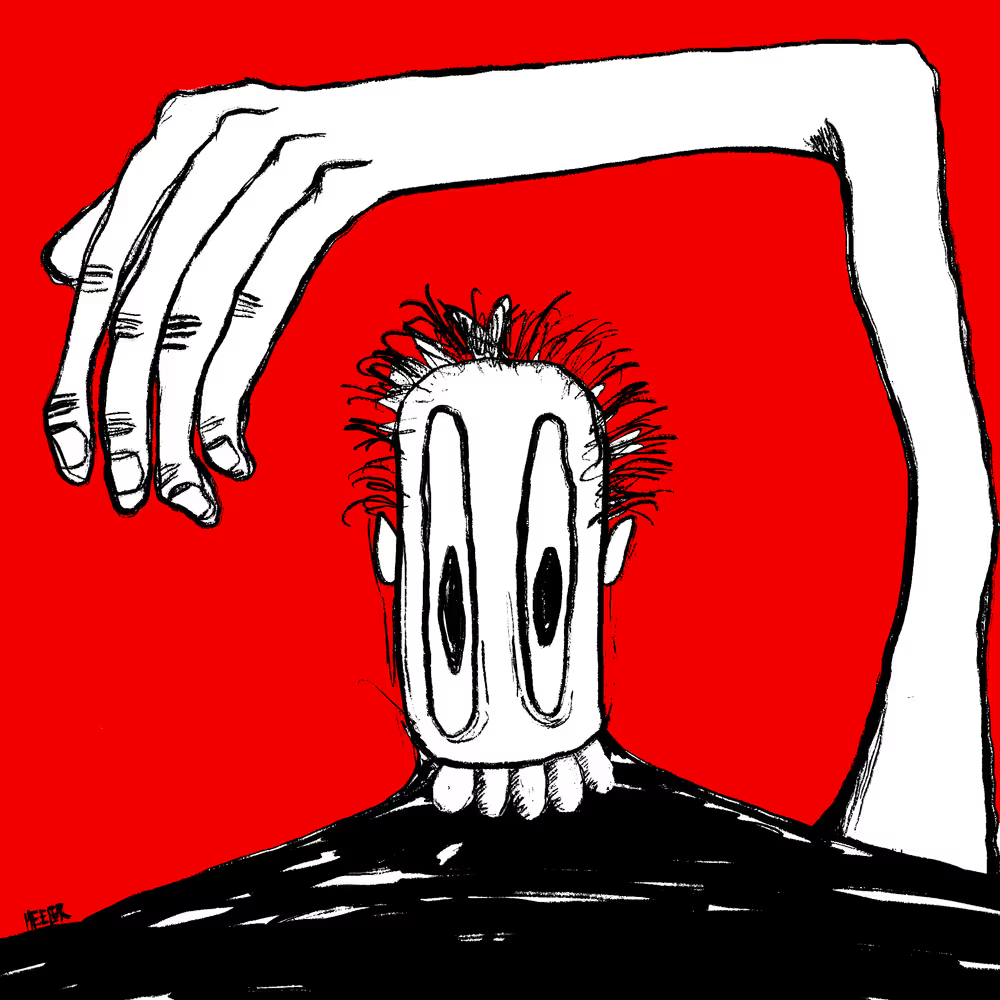
Lunatic #21, Gavin Meeler
The Digital as a Zone of Disorder
There’s another layer to Lunatics, not psychological, but cultural, social, technological.
Back in 2021, those who dared pioneer digital art were often seen as visionaries… or lunatics. Maybe both. Meeler absorbs that ambivalence and turns it into aesthetics. His Lunatics become grotesque prophets of an unstable age, sacred clowns of the digital revolution. Deconstructed avatars who embody a generation’s disorientation.
Each Lunatic is an alter ego. A meme that gained self-awareness. A mask that no longer wants to be removed.
In a world obsessed with control, with optimized content and curated personas, Meeler chooses the opposite. Chaos. Imperfection. Absurdity. And he does it with painful clarity.
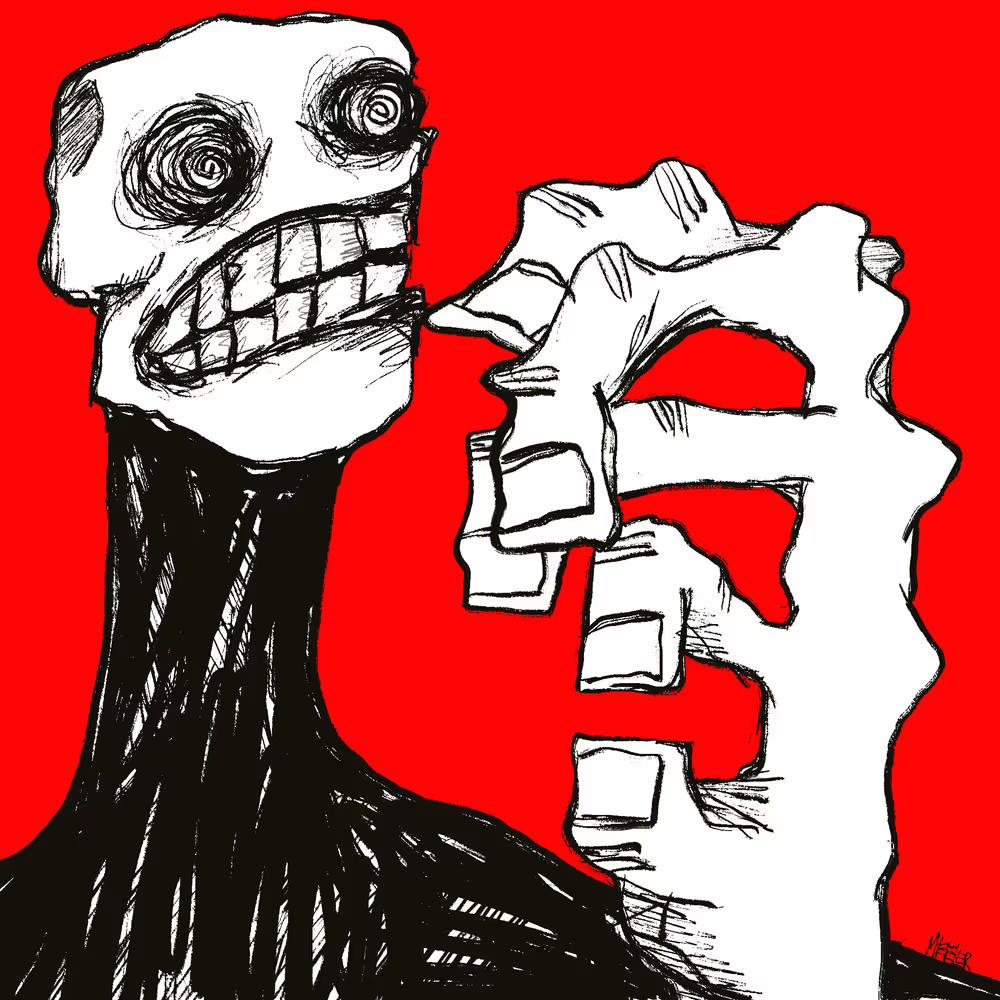
Lunatic #55, Gavin Meeler
Art as Confession
“Lean into the unhinged side of yourself,” the artist writes.
It’s not just an invitation to be bold, it’s a political and poetic statement. In a world that demands performance, coherence, and usefulness, Lunatics is a gallery of confessions. Not truths, but fragments. Each one is a self-portrait of humanity at its most vulnerable. And maybe, most real.
Meeler’s art doesn’t seek harmony, it embraces fracture. It doesn’t seek consistency, it thrives on tension. And it’s there, in that instability, that his work finds its meaning. In a world obsessed with clarity, Lunatics responds with an image that lingers like a bruise.
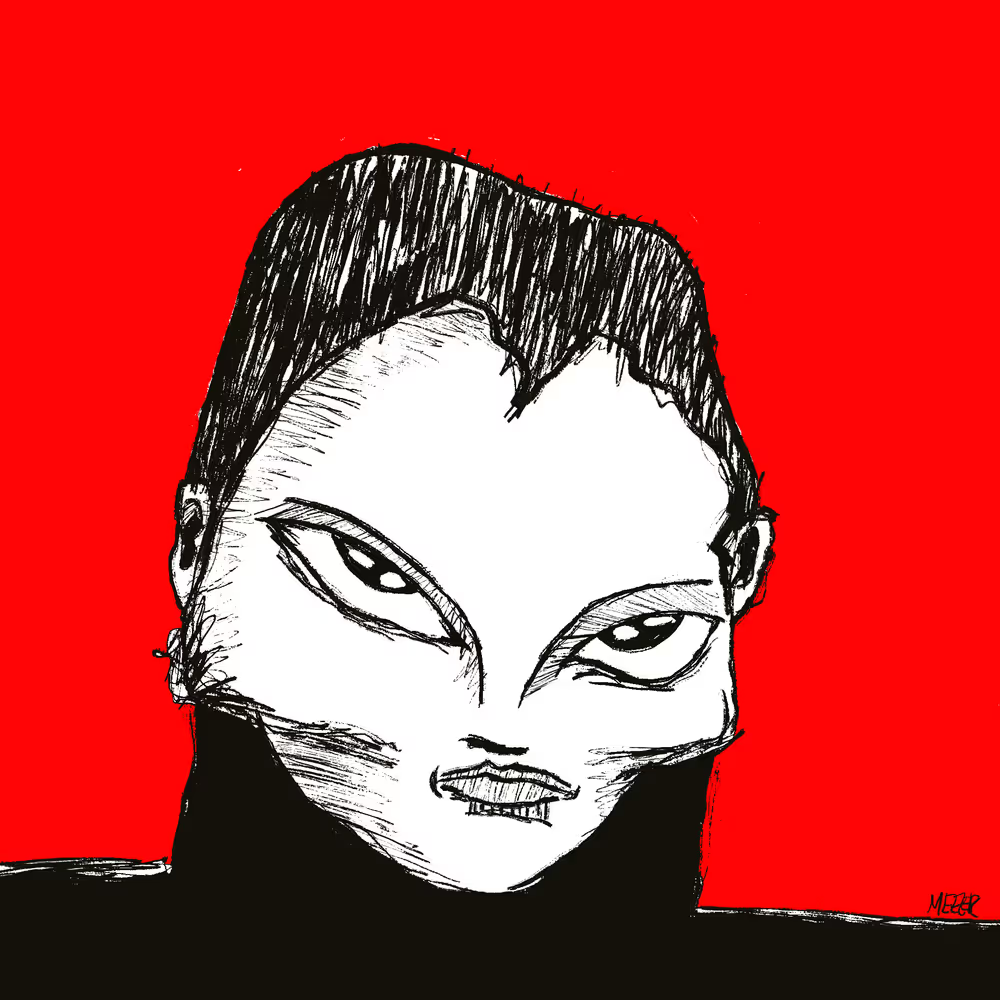
Lunatic #43, Gavin Meeler
To Look Inward Not to Understand, But to Remember
Ultimately, Lunatics is a mirror. But not the kind you use to admire yourself. It’s cracked, murky, unsettled. And in those cracks, we find ourselves. Not whole. Not beautiful. But alive.
Meeler doesn’t ask us to understand. He asks us to feel. To listen to the noise inside. To stop hiding it.
And maybe that’s the most radical message in his art: that the broken, absurd, grotesque parts of us are not to be feared, but heard. That truth can arrive in a deformed face, a hysterical laugh, an eye that doesn’t look, but sees.
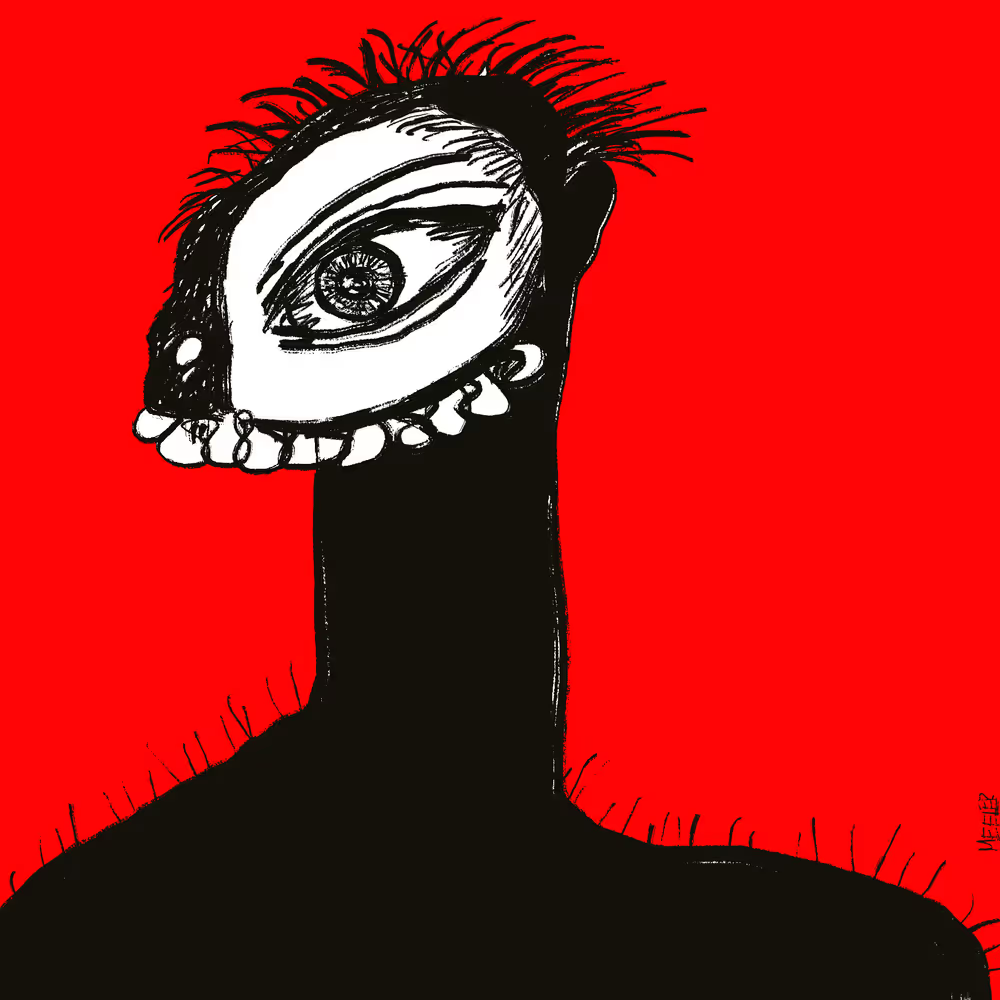
Lunatic #36, Gavin Meeler
So, tell me:
What shape does your Lunatic take?
And when was the last time you let it speak?
Sign up for our newsletter to keep up with the latest news from NINFA
Sign up for our newsletter to keep up with the latest news from NINFA
Write us at: info@ninfa.io, or click here if you need support
Copyright © 2026 Ninfa Labs - 12094240962 - All rights reserved

